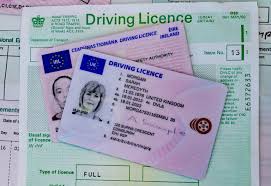Introduction
The Driver and Vehicle Licensing Agency (DVLA) plays a crucial role in the regulation of driving licences in the United Kingdom. Recent changes to these regulations have raised significant interest among current and aspiring drivers. Understanding these changes is vital for ensuring compliance and avoiding any potential penalties.
Key Changes Announced
In 2023, the DVLA introduced several important amendments to the driving licence process. One of the most noteworthy changes is the transition to an online service for both exchanging and renewing driving licences. While traditionally done via postal services, this new method aims to streamline processes, reduce waiting times, and enhance convenience for users. According to the DVLA, this move is part of a broader initiative to modernise services and improve customer experience.
Additionally, the DVLA has updated its criteria for medical standards related to driving. Drivers are now required to report certain medical conditions more transparently. This change not only enhances road safety but also ensures that drivers who are at risk for medical-related issues are identified and supported, thus preventing potential hazards on the road.
Impact on Drivers
These changes present both challenges and benefits for UK drivers. For many, the shift to an online platform represents a positive advancement that can reduce the hassle of application and renewal processes. However, it may also pose difficulties for those who are less tech-savvy or do not have easy access to the internet. In response, the DVLA has committed to maintaining support through phone services and traditional methods for those in need.
The new medical conditions reporting requirement places additional responsibility on drivers, calling for greater awareness of personal health. While this could lead to increased safety on the roads, some drivers may feel apprehensive about reporting conditions due to concerns over getting their licence revoked.
Conclusion
In summary, the recent DVLA driving licence changes underscore the agency’s commitment to improving, modernising, and ensuring the safety of UK’s roadways. By transitioning to a more digital platform and updating medical reporting standards, the DVLA aims to enhance the driving experience while prioritising safety. Drivers should stay informed about these changes to ensure they comply and fully understand how these regulations may affect them in the future. As the DVLA continues to roll out these reforms, it will be essential to monitor their impacts and gather feedback from the driving community to ensure the effectiveness of these new measures.
